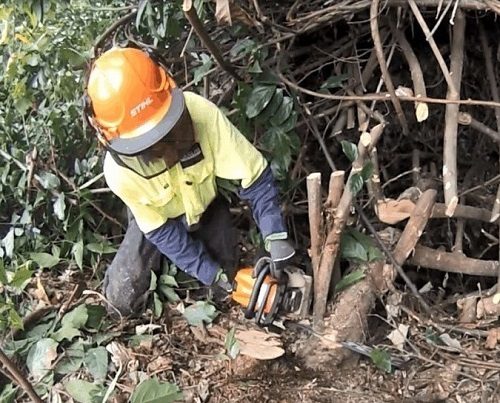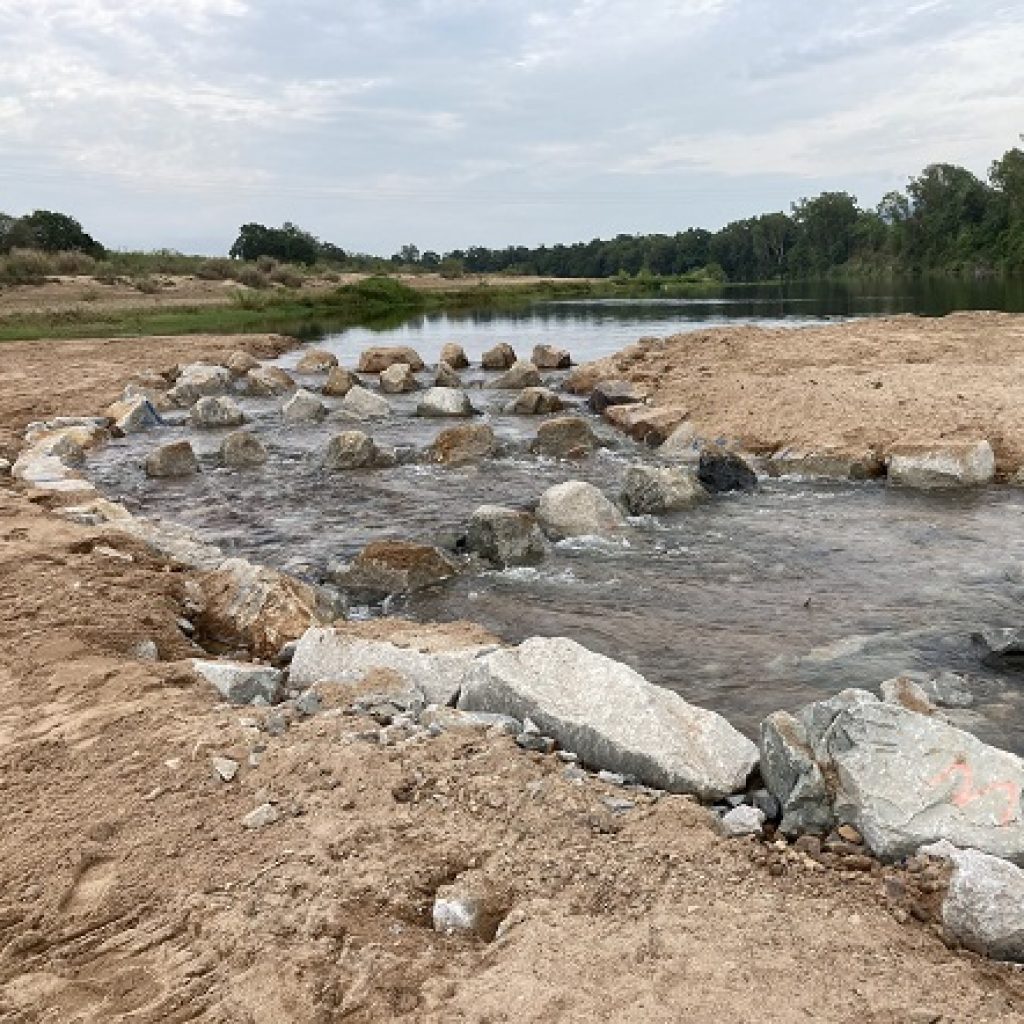FIGHTING INVASIVE WEEDS
GAINING GROUND ON HIPTAGE
21 APRIL 2020
A major threat to world-heritage rainforest in the Mossman area is sending work crews into the thick of forests.
Crews spent six weeks freeing-up a creek system on a property bordering Mossman National Park in the latest assault on the invasive weed hiptage which is smothering rainforest north of Cairns.
Douglas Shire Council Biosecurity Team Leader Brad Everett said the hiptage incursion was almost impenetrable.
“It’s a really hard, woody vine that grows up trees and smothers them – it gets so heavy it can bring the trees down,’’ he said. “Then it throws roots down and becomes a dense bramble.”
He estimates work crews cut down thousands of mature vines and removed tens of thousands of seedlings during the six-week campaign which is part of a regionwide Native Vegetation Improvement Project funded by Terrain NRM through the Queensland Government’s Natural Resources Investment Program.
“We almost had a monoculture – now the native forest can regenerate and self-seed in this area,’’ Mr Everett said.
Douglas Shire Council and the Queensland Parks and Wildlife Service have been working for more than a decade to contain hiptage in a 60-hectare section of the Mossman River Catchment.
“Over the years we’ve got to the stage where we can walk through sections that were once choked with hiptage and just remove one or two seedlings,’’ Mr Everett said.
“We run aerial surveys and on-ground monitoring each year. The funding from Terrain NRM will also allow us to begin another eradication program in coming months in a different Tara Hills area.”
Terrain NRM’s Tony O’Malley said work was also underway to improve the resilience of big patches of native vegetation on the Tablelands and in the Cassowary Coast region.
“This project has brought councils from across the region together to decide on priority areas of native vegetation where they can make measurable improvements over the next few years through funded on-ground works,” he said.

About hiptage:
A perennial plant that can grow to more than 15m and is more vine-like in rainforest and more shrub-like in open areas.
Leaves are opposite, elliptical, 9-19cm long, 4-9cm wide, shiny on top, with leaf stalks up to 1cm long.
Flowers are white tinged with pink and yellow markings, fragrant, up to 20cm long, and in clusters of 10 to 30.
Fruit has 3 papery wings 2-5cm long that float on wind and contain 1 to 3 seeds which are pale brown, round and 5-6mm. Seeds are spread by wind and water.
Prefers shady, moist areas such as closed forests and creek and riverbanks. Smothers native vegetation.
RELATED POSTS
Saving endangered mahogany gliders
 Elaine
Elaine
 February 26, 2024
February 26, 2024
New fishways help species to breed up
 Elaine
Elaine
 January 22, 2024
January 22, 2024
Cassowary crossings improved
 Elaine
Elaine
 September 26, 2023
September 26, 2023






























